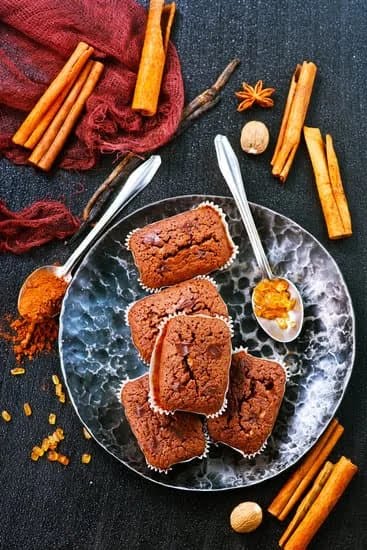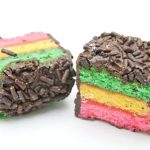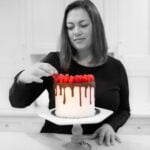Are you wondering, “how do I use fondant to decorate a cake?” Fondant is a versatile and popular choice for cake decorating, allowing you to create beautiful designs and intricate details. In this article, we will explore the various aspects of using fondant to decorate a cake, from understanding what fondant is to mastering the art of coloring and shaping it.
Fondant is a type of icing that can be rolled out and molded into various shapes, making it ideal for creating professional-looking cakes. It provides a smooth and flawless finish that can elevate the appearance of any cake. In this section, we will delve into the basics of working with fondant, including its different types and the reasons why it has become a favorite among bakers and decorators.
Before you can start working with fondant, it’s essential to understand how it works and why it’s beneficial for cake decorating. We will take a closer look at the characteristics of fondant that make it unique and discuss why it’s an excellent choice for both amateur and experienced bakers alike. Whether you’re looking to achieve a polished and elegant look or unleash your creative side with intricate designs, fondant offers endless possibilities for cake decoration.
Types of Fondant
Rolled fondant and poured fondant are two popular types of fondant used for cake decoration. Each type has its own unique characteristics, making them suitable for different cake decorating techniques.
Rolled fondant, also known as ready-to-roll icing, is a versatile type of fondant that can be rolled out into thin sheets to cover cakes or create decorative designs. It has a smooth and pliable texture, making it easy to work with when creating intricate details such as flowers, ruffles, or bows. Rolled fondant is often used for covering wedding cakes or special occasion cakes due to its elegant look and ability to hold its shape well.
On the other hand, poured fondant is a creamy and pourable type of icing that is traditionally used for coating petits fours or icing eclairs. Poured fondant has a smooth and glossy finish, which makes it perfect for giving cakes a sleek and professional appearance. It can also be used for creating simple designs and patterns on cakes by pouring the melted fondant over the cake surface.
When deciding which type of fondant to use for cake decoration, consider the desired outcome and the specific techniques you plan to use. Rolled fondant is ideal for intricate designs and covering large surfaces, while poured fondant is best suited for achieving a smooth and polished look on smaller confectionery items.
Preparing Your Cake
Before you can start decorating a cake with fondant, it is essential to properly prepare the cake. This includes icing and leveling the cake to ensure a smooth surface for the fondant to adhere to. Here are some tips for preparing your cake before applying fondant:
- Ensure that your cake is completely cooled before you begin the icing process.
- Use a crumb coat of icing to seal in any loose crumbs on the cake’s surface.
- Once the crumb coat has set, apply a thicker layer of icing to create a smooth and even surface for the fondant.
Leveling your cake is also crucial to prevent any lumps or bumps from showing through the fondant. Use a long serrated knife or cake leveler to carefully trim off any domed or uneven areas of the cake. It’s important to take your time and work slowly to ensure that the surface is level.
Finally, make sure that the sides of your cake are straight and even before moving on to applying the fondant. This will provide a clean canvas for decorating with fondant.
By following these tips for preparing your cake, you will create a solid foundation for decorating with fondant and achieve professional-looking results.
Remember, you want your finished product to look as good as possible, therefore, spending sufficient time on preparing your base is crucial.
Now that we have walked through how to properly prepare your cake for fondant application, you will be ready for the next step which involves rolling and handling fondant.
How to Roll Out Fondant
Rolling out fondant is a crucial step in the process of decorating a cake. It requires precision and careful handling to ensure that the fondant is smooth and free from cracks or tears. Here, we will provide you with a step-by-step guide on how to roll out fondant and some tips on handling it effectively.
Step 1: Prepare Your Work Surface
Before rolling out your fondant, make sure to prepare your work surface by dusting it with powdered sugar or cornstarch. This will prevent the fondant from sticking to the surface and make it easier to handle.
Step 2: Knead the Fondant
Take your fondant and knead it until it becomes soft and pliable. This will make it easier to roll out and prevent any cracks from forming. If the fondant is too hard, you can microwave it for a few seconds to soften it up.
Step 3: Roll Out the Fondant
Once your fondant is kneaded, use a rolling pin to roll it out into a thin, even layer. Start from the center of the fondant and roll towards the edges, lifting and turning the fondant as needed to ensure an even thickness.
Step 4: Lift and Drape
After rolling out the fondant, carefully lift it using your rolling pin and drape it over your cake. Smooth out any air bubbles or wrinkles using a fondant smoother or your hands, starting from the top of the cake and working downwards.
By following these steps, you can successfully roll out fondant and decorate your cake with smooth, flawless results. Remember to take your time and be patient when working with fondant – practice makes perfect.
Decorating With Fondant
When it comes to decorating a cake with fondant, the possibilities are endless. Fondant allows you to create intricate designs, shapes, and figurines that can truly elevate the look of your cake. Whether you’re a beginner or an experienced baker, there are several techniques that you can use to showcase your creativity when working with fondant.
Here are some popular techniques for creating stunning designs with fondant:
- Embossing: Use embossing mats or rolling pins to add texture and patterns to your fondant. Simply roll the embossing tool over the fondant to create a beautiful and unique design.
- Cut-Outs: Utilize cookie cutters or specialty cutters to create different shapes and designs out of fondant. This technique is perfect for creating flowers, leaves, geometric shapes, and more.
- Ruffles and Drapes: Create elegant ruffles and drapes by cutting strips of fondant and layering them in various patterns. This technique adds a touch of sophistication to any cake design.
- Figurine Modelling: Sculpt adorable figurines or intricate characters using fondant. With a bit of practice, you can create personalized figurines that will impress your friends and family.
Using these techniques, you can take your cake decorating skills to the next level and create show-stopping designs that will leave everyone in awe.
Coloring Fondant
Choosing the Right Coloring
When it comes to coloring fondant, it’s important to choose the right type of coloring to achieve the perfect shade. Gel or paste food colors are recommended for tinting fondant as they won’t significantly alter its consistency. These types of colors also provide a more intense hue compared to liquid food coloring, allowing you to achieve vibrant and deep shades.
Mixing Colors Effectively
Mixing fondant colors can be a fun and creative process, but it’s essential to do it properly to avoid ending up with an undesired result. Start by adding a small amount of color to your fondant and kneading it thoroughly until the color is evenly distributed.
Keep in mind that colors tend to deepen over time, so don’t rush the process. If you need a custom shade, consider mixing different colored fondants together gradually until you achieve your desired color.
Achieving Pastel and Vibrant Shades
Whether you’re aiming for pastel tones or vibrant hues, there are some tips for achieving the perfect shade when coloring fondant. To create pastel shades, start with white fondant and gradually add small amounts of color until you reach your desired tint. For creating vibrant colors, start with pre-colored fondant in a similar shade as your desired hue, then add concentrated gel or paste color until you achieve the vibrancy you’re looking for.
By following these tips and experimenting with different methods of coloring fondant, you can take your cake decorating skills to the next level and create stunning edible works of art.
Troubleshooting
Working with fondant can be a fun and creative way to decorate a cake, but it can also come with its own set of challenges. In this section, we will discuss some common mistakes that people encounter when working with fondant and provide helpful tips on how to fix them.
One of the most common issues when working with fondant is air bubbles. These pesky pockets of air can create unsightly bulges in your cake decorations. To prevent air bubbles, make sure to knead your fondant well before rolling it out.
Additionally, gently smooth the fondant over your cake using a fondant smoother or your hands to release any trapped air. If you do end up with air bubbles, simply use a pin to prick the bubble and then gently smooth the area to release the air.
Another common problem when using fondant is cracking. Fondant can crack if it becomes too dry or if it’s rolled out too thin. To prevent cracking, make sure to knead your fondant until it is smooth and pliable.
When rolling out the fondant, aim for an even thickness across the entire surface. If cracks do develop, you can try smoothing them out with a small brush dipped in water or by using a small amount of shortening on your fingertips.
Lastly, uneven coloring can be a frustration when working with fondant. Achieving the perfect shade of colored fondant can be tricky, but there are ways to fix uneven coloring. If you find that your colored fondant is patchy or streaky, try kneading it more to distribute the color evenly throughout the entire piece of fondant. You can also add a small amount of white vegetable shortening to help blend the color and achieve a smoother finish.
By being aware of these common mistakes and knowing how to troubleshoot them, you’ll be better equipped to create beautifully decorated cakes using fondant.
| Common Mistake | How to Fix It |
|---|---|
| Air Bubbles | Knead well before rolling and smooth out any trapped air with a pin |
| Cracking | Prevent by keeping the fondant pliable and even in thickness; Smooth cracks with water or shortening |
| Uneven Coloring | Knead more thoroughly and add small amount of white vegetable shortening for smoother finish |
Finishing Touches
After you have successfully covered your cake with fondant and created your desired designs, it’s time to add the final touches to make your cake truly stand out. One popular way to enhance the look of a fondant-decorated cake is by adding edible paints or luster dust.
Edible paints can be used to create intricate details, write messages, or add a pop of color to your designs. Luster dust, on the other hand, adds a subtle shimmer or metallic sheen to your fondant creations.
Another important aspect of finishing off a fondant-decorated cake is ensuring that all edges are smooth and polished. This can be achieved by using a fondant smoother or paddle, which helps eliminate any wrinkles or air bubbles on the surface of the fondant. Additionally, you can use a small amount of vegetable shortening on a brush to buff out any imperfections and create a polished finish.
Furthermore, consider adding some non-edible embellishments such as ribbons, fresh flowers, or decorative cake toppers to complement your fondant designs. These extra touches can really elevate the overall presentation of your cake and make it even more visually appealing for special occasions.
| Aspect | Description |
|---|---|
| Edible Paints and Luster Dust | Used for adding color and shimmer to fondant designs |
| Fondant Smoother | Tool used for achieving smooth and polished edges on fondant-covered cakes |
| Non-edible Embellishments | Ribbons, fresh flowers, and decorative toppers for enhancing the overall appearance of the cake |
Conclusion
In conclusion, using fondant to decorate a cake opens up a whole world of creativity and design possibilities. Whether you are a beginner or experienced baker, fondant provides a versatile medium for expressing your artistic flair and adding stunning finishing touches to your cake creations.
By following the step-by-step guide provided in this article, you can learn how to use fondant to elevate the visual appeal of your cakes and impress your friends and family with professional-looking desserts.
Learning about the different types of fondant, such as rolled and poured fondant, allows you to choose the best option for your cake decorating needs. Understanding how to properly prepare your cake by icing and leveling it before applying fondant is crucial for achieving a smooth and professional finish. Additionally, mastering the techniques for rolling out fondant, creating designs, shapes, figurines, and coloring fondant will help you bring your creative visions to life.
Overall, by addressing common troubleshooting issues when working with fondant and adding final details to polish your fondant-decorated cake, you can showcase your skills as a talented cake decorator. With practice and patience, you can become proficient in using fondant as a tool for artistic expression in the world of baking. So go ahead, unleash your creativity and start experimenting with fondant to take your cake decorating skills to new heights.
Frequently Asked Questions
How Do You Put Fondant on a Cake for Beginners?
To put fondant on a cake for beginners, start by leveling the cake and spreading a thin layer of frosting to adhere the fondant. Knead the fondant, roll it out, and carefully drape it over the cake. Smooth out any wrinkles or air bubbles using a fondant smoother.
Can You Put Fondant Directly on a Cake?
Yes, you can put fondant directly on a cake. However, it’s important to ensure that the cake is level and covered with a thin layer of frosting to provide a smooth surface for the fondant to adhere to. Properly kneading and rolling out the fondant will also help in achieving a professional finish.
How Do You Get Fondant Decorations to Stick to a Cake?
Fondant decorations can be made to stick to a cake by using water or edible glue as an adhesive. Lightly brush the back of the decorations with water or edible glue and gently press them onto the fondant-covered cake. For larger or heavier decorations, support them with toothpicks until they dry and set in place.

Welcome to our cake decorating blog! My name is Destiny Flores, and I am the proud owner of a cake decorating business named Cake Karma. Our mission is to provide delicious, beautiful cakes for all occasions. We specialize in creating custom cakes that are tailored specifically to each customer’s individual needs and tastes.





